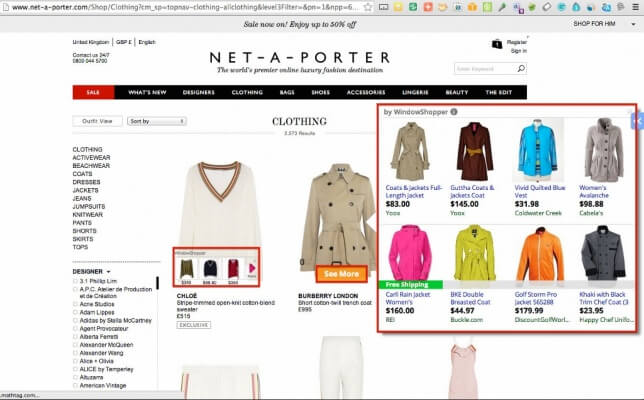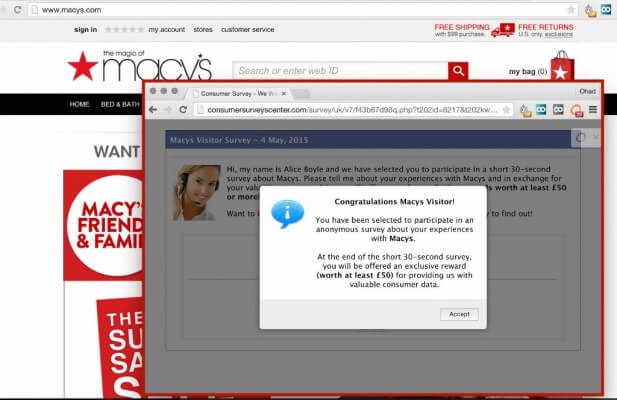Retailers: New Malware Threat Could Steal Your Site Traffic On Black Friday
Your customers are being targeted by 'injected ads' which pop up on your site and divert traffic to shady online retailers. On Black Friday, some shops will lose 50% of their traffic this way. Here's how to identify whether you are a victim.
Your customers are being targeted by 'injected ads' which pop up on your site and divert traffic to shady online retailers. On Black Friday, some shops will lose 50% of their traffic this way. Here's how to identify whether you are a victim.
Retailers: New Malware Threat Could Steal Your Site Traffic On Black Friday
Your customers are being targeted by 'injected ads' which pop up on your site and divert traffic to shady online retailers. On Black Friday, some shops will lose 50% of their traffic this way. Here's how to identify whether you are a victim.

UK retailers are looking forward to a bumper four days of sales next weekend, with an estimated £1 billion set to be spent online on Black Friday and Cyber Monday. But there’s something you should know about your site traffic.
Some 15-30% of it is being taken over, all the time. Even right now. And next weekend it will increase, and up to 50% of your site traffic will be stolen. You won’t even know it’s happening.
The threat is called Client Side Injected Malware (CSIM). Server-side protections won’t save you because it’s not hitting your server in the first place. It lives in the browsers and computers of your online shoppers, where you, the company, have no jurisdiction.
Your customers install CSIM unknowingly, by installing other stuff. This malware collects data about your customers. It injects ads and competitors products on your website. And it looks like they’re a part of it. It happens on all devices.
Your company lives or dies by your website, it’s about your brand, your credibility and your sales. Companies spend billions every year on server-side protections, making sure that hackers and malware don’t compromise their sites.
Everyone from the smallest independent retailers to the giants like Amazon and eBay deal with the same digital threats against their online footprint.
Take a look at this:
It’s a product page for Net-A-Porter, a top-tier ecommerce site, as viewed from a CSIM infected browser. Not only does the injected ad fit neatly within the authentic website, but it’s giving smart recommendations that look and feel very native to the Net-A-Porter experience. Your customer clicks on it, makes their purchase on a competitor’s website, and you’re none the wiser.
Here are four signs that CSIM is stealing your traffic:
1: Third party services on your site don’t show any results
If you’ve installed a third party service like the popular Hello Bar subscription toolbar or a special discount popup, but aren’t seeing significant results, there’s a good chance CSIM is causing the problem. Your visitors aren’t even seeing the bar or popups because they’re being obstructed by an overlaid, injected ad.
2: Traffic and conversion numbers just don’t add up.
Your marketing funnel is healthy and you’re spending good money to bring traffic to your site, but for some reason the conversions just aren’t following. In bigger companies the issue may be even further clouded by the fact that the CMO who buys the media isn’t communicating effectively with the head of ecommerce who is monitoring conversions.
You can tweak the funnel, but checking for CSIM should be your first stop. Otherwise you’ll be throwing money into the fire and playing with metrics that may have nothing to do with the real problem.
3: Your customers are complaining about competitor ads and suspicious surveys.
This may seem obvious, but don’t ignore these phone calls and messages. For every customer who takes the time to report the issue there are 100 more who simply give up and take their business elsewhere.
In the past six months we’ve seen a 40% increase in new malware that injects a fake survey into the website experience. It’s alarmingly effective at getting users off your site.
It doesn’t take much to lose a customer’s interest online. Even if your site merely looks “off,” they’ll simply assume it’s a security issue on your end. Now you’ve lost a customer and brand integrity.
4: Your bounce rate rises but your conversion rates drop.
High bounce rates can point to a few things, but when coupled with low conversion rates on your checkout page, the Client Side Malware is very likely the culprit. CSIM can break secure https checkout pages by injecting non-https elements into the page. Even a security certificate can’t fully protect you.
If your site metrics go against common sense, Client Side Malware may be the root cause. The threat is growing, but smart brands can stop it before it becomes a costly problem.
Namogoo’s patented solution allows ecommerce providers to combat CSIM for the first time by detecting and blocking active CSIM on a consumer’s browser or computer, with zero integration.
Scan your website for free at: www.namogoo.com
Thanks for signing up to Minutehack alerts.
Brilliant editorials heading your way soon.
Okay, Thanks!




